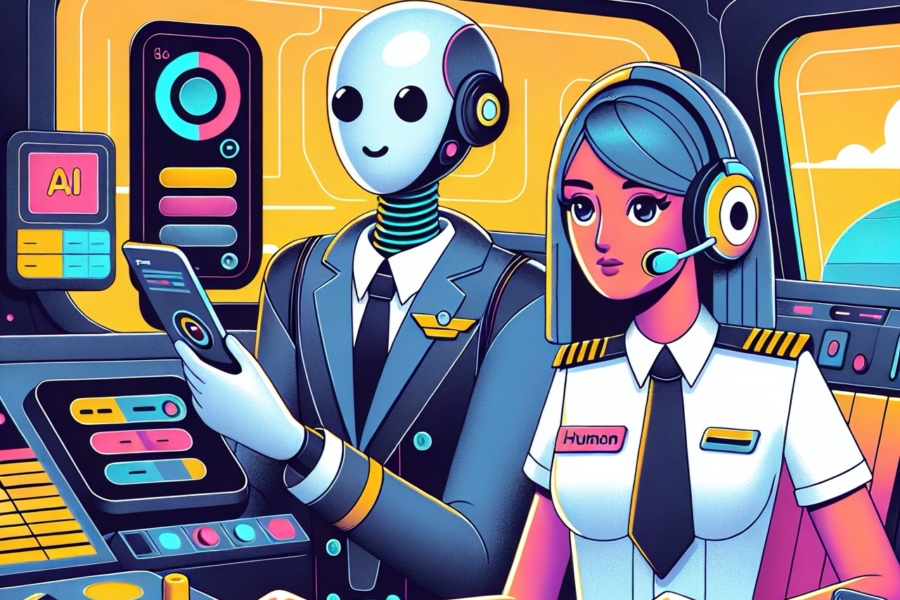These days, AI seems to be everything, everywhere all at once. It’s pretty hard to browse the web without seeing a headline or screenshot of something that ChatGPT generated.
The roots of the current phenomenon goes back to 2017, when a research paper “Attention Is All You Need” sparked a new phase of innovation in AI and large language models. It detailed a new capability, called the transformer, that completely transformed the way data was processed for machine learning models. Now we’re seeing its impact not just with language models (ChatGPT) but also with images (Stable Diffusion, DALL·E ), voice (Whisper) and much more.
Referred to as “Generative” AI, this new frontier promises to disrupt many facets of how we live, learn and work. On top of these models are a new generation of AI companies, many of which are focused on education. As a matter of fact, the projected impact on education is so enormous that within just five weeks of the launch of ChatGPT it was banned by the NYC Department of Education. When have we seen government institutions act so quickly in response to technology innovations? And when might we see a more positive reaction?
In any case, AI in education is not a new trend. When Reach started in 2015, we met a number of companies taking advantage of cutting-edge advancements at the time, in image recognition, natural language processing, voice recognition and machine learning. We invested in these categories through companies like:
- Mainstay: chatbot for student support
- TeachFX: audio recognition for analyzing dialogue in the classroom
- Mathpix: image recognition for handwriting in math and science
- Gradescope: image recognition for grading (acquired by Turnitin)
- WriteLab: natural language processing for writing assistance (acquired by Chegg)
Today, as we witness a new wave of AI education companies, the excitement brings me back to my first piece on this topic, which I wrote in 2018. Although the education market and underlying technology have certainly changed, there are some valuable lessons we learned from our experiences. For entrepreneurs who are starting an AI education company today, here are some things to keep in mind:
1. What’s your unique data and approach?
During the previous wave of AI, much of the conversation was about how to leverage models like TensorFlow (an open source machine learning platform) or whether companies would have to build their own platform. Today OpenAI is like the new TensorFlow, with models that are incredibly and increasingly powerful.
But companies should not rely entirely on models they do not own. Simply building an API to GPT-3 or another out-of-the-box model, and adding some UX wrapper around it, is not a strong differentiator or value creator. Rather, fine-tune it with data that are not on the open web and are unique to your use case. Bigger, established companies with large data sets (i.e. Turnitin with its student essays, or Quizlet with study flashcards) will have advantages at the outset, but new players will catch up.
For startups, it’s important to consider how you can access unique, specific data sets. One possibility is to capture it in real time as people use your product, and include a “human in the loop” to ensure that the data is accurate and valuable to your needs. Some companies use a mix of different data models to fine-tune their output. As a founder, think about how you will compete with others on data and how it will be unique given that all startups will have access to the same APIs and models developed by OpenAI and others.
2. Are you solving for efficiency or bigger problems?
Sure, developing technology for technology’s sake can grab headlines. But make sure your product is not divorced from the problems that it’s supposed to solve for teachers and learners. What ultimately matters for a successful business is whether you solve problems, regardless of whether AI or another cutting-edge tech is involved. Especially in education, presenting technology merely as a silver bullet could be a red flag.
Many AI education companies—past and current—brand themselves as “AI for X” and promise better efficiency (for example, AI for grading). That’s certainly a valuable proposition, but sometimes they miss bigger opportunities to solve more fundamental challenges in education.
“To use AI as a point solution for efficiency is equivalent to those who saw the electric lightbulb merely as a replacement for candles,” says MainStay CEO Andrew Magliozzi. “The greatest impact for AI comes through deep partnerships focused on system change to solve the most pressing problems of access, equity, and achievement in education.”
While there are many exciting use cases and possibilities for AI, successful companies will be those that solve big hairy problems. Claiming to be “AI for X” may undermine the complexity of the problem you are trying to solve. As we’ve seen from the rollercoasters of crypto, metaverse and VR, adoption hinges on whether or not the product delivers better experiences and outcomes. More simply put: How is AI making lives better?
3. Leverage educational research and pedagogy.
Any technological approach to solving a problem in education should be guided by research and pedagogy. ChatGPT can produce incredible output (though sometimes it is also very wrong!), and it’s tempting to think that we can learn everything on our own. But just because we can learn from a chatbot, should we?
While one-to-one instruction has proven to be incredibly effective, it is not a solution for all learning experiences. Also, not all tutors have the same impact on students. Research shows that, beyond subject expertise, the best tutors also establish rapport with their students, provide more questions than directions, and create opportunities for reflection. If you are thinking about developing an AI tutor, how will you design the interactions between your bot and the student so they get inspired to push themselves and “embrace stress” as an opportunity to grow?
Human interactions and relationships are critical for learning, so it’s important to think how AI-enabled solutions can bring them to scale. In the case of TeachFX, its voice AI helps teachers reflect on their own instructional practices and is based on decades of research on classroom discourse and student talk.
Make sure to learn about and incorporate the best of educational research and pedagogy into your product design. One way to do this: connect with researchers who can “quality-proof” and measure the potential (or real) impact of your AI. It’s no accident that many of the companies we’ve invested in work closely with researchers to apply and scale proven cognitive science. Remember that AI, while incredibly promising, also poses tremendous inherent risk. Magliozzi believes that “companies that deploy this technology must welcome scrutiny at the very least to avoid doing harm and at the very best to achieve positive outcomes that close equity gaps.”
I hope these insights help founders of new AI companies avoid pitfalls and deliver high-impact, scalable companies that improve educational experiences and outcomes.
We are extremely excited about the new generation of edtech companies that are leveraging the latest developments in AI. Please reach out and let us know how we can be of help!
Thank you Andrew Magliozzi for reviewing an earlier draft of this post.






